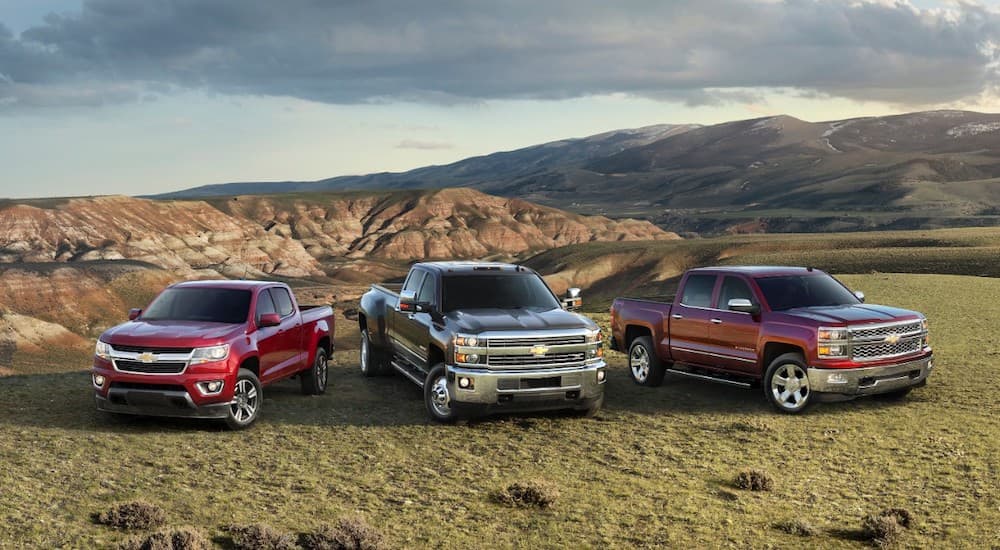Attempting to figure out the buying patterns of US citizens can be one of two things. It is either 1) an enjoyable game or 2) a dangerous game. Lay folk like us think of it as the former, but there are very highly paid people that treat the latter as a career. Lay folk can sit around a barbecue or bonfire, with a beer in hand and ponder what is going to happen in the next few years of the American automotive market. People in the other category make far greater decisions on whether or not we buy new Chevy trucks or used Chevy trucks.
It is beyond the scope of comprehension how, or why, for that matter, these folks could do that. Madison Avenue has claimed, for years, that their day-to-day decisions dictate the jeans and t-shirts we all wear five years later. They make the commercials that decide whether we Pepsi or Coke, McDonald’s or Burger King. K Street in Washington, DC, decides far more than Madison Avenue, but that’s a story for another day.
All About Advertising
Advertising professionals have their home base, and lobbyists have their home base. But few industries in this country have the advertising power, brand loyalty, and the social influence of the automotive industry. Think about it. If you were to watch one hour of television, be it network or cable (something with commercials), how many ads would you see for Chevy? Or Ford? Or Toyota? Or McDonald’s?
Where is the de facto home base for the automotive advertising industry? Detroit is a viable answer, but so is Japan. So is South Korea. So is Germany. The major world automakers have their feet in the doors of Madison Avenue and K Street, but their real foothold is in the American homes. Time and time again, we see ads for the all-new 20-insert year here car/truck/SUV. Those ads are everywhere. They are on TV commercials. They are on radio commercials. They are on Facebook, YouTube, Reddit, Joe’s Blog, and everywhere you look online.
The vast majority of these ads are telling you to buy the newest, greatest, best-in-class this or that. They are all skewed to appeal to the buyer’s needs. “Need the best-in-class towing, buy the blahblahblah!” “Want the best-in-class this or that, get the all-new yadayadayada”. These ads are full of half-truths and altered perception, designed to make the potential buyer believe that they cannot live without the 20?? random whatever XYZ trim level.
In all honesty, most of these ads are incredibly clever. The major US automakers spend billions every year on research and development. Foreign automakers do, too. They hire amazing writers and advertising professionals to turn that research into what they believe the public wants to see. And, by God, it works!
Millions of new vehicles are sold every year. People eat the good advertising up. Just like they do McDonald’s. They say “Yes, I do want blahblahblah with the available this or that on the all-new yadayadayada.” It is very appealing, no question.
New Technology
Aye, here’s the rub: new cars/trucks/SUVs are incredibly expensive. They are filled with the absolute latest technology that is trying to compete with the other guy’s most recent technology. That includes what is under the hood and what is in the rapidly evolving CPU. It is a never-ending game that automakers play, and the consumer pays for it.
What the brilliantly crafted and insightful ads fail to mention is that there will be a new 20-something car/truck/SUV coming out next year. And the year after that. And the year after that. It is a continuous cycle because they all know we need to get around our respective towns.
Who can blame them, though? New vehicles mean a whole lot more money. They don’t want to advertise an alternative option that makes them nothing. They want to make the optimal dollar for their advertising money spent. Fair enough.
What they routinely fail to advertise is the fact there are millions of used cars/trucks/SUVs on the market, and for far less than the newest 20blah MSRP will offer. These vehicles have served their prior drivers well, but it is time to find the next driver, the next loving owner that will hold the sacred parking spot and shower it with soap and a sponge when it is time.
Used is as Good as New
That, dear reader, is where you come in. The new Chevy truck market, for example, is thriving. More and more people are driving new trucks every year because they are buying into the advertising hype. Either that or they all just really love the new truck smell. That is pretty difficult to duplicate, but we don’t believe that many people are in the new truck market for that reason.
Used Chevy trucks are available across the nation. From superstores to mom-and-pop operations, you can find used Chevy trucks just about anywhere you look. You can find them in the classifieds section of the newspaper. Your neighbor down the street might have one out in the front yard. They really are everywhere.
The time has never been better for the used vehicle market. There are so many features included (and optional) that each automaker is trying to keep up with the next. As such, each year model is being loaded down with these new impressive safety, infotainment, and convenience features. These features have turned the modern car, truck, and SUV into much more than a basic mode of transportation.
Automotive technology has evolved so rapidly this century that modern-day dashboards look more like alien spacecraft cockpits from old science fiction shows and movies. With any luck, the next generation of the Chevy Silverado will have a “Millennium Falcon” trim level to compete with the Ford F-150’s “USS Enterprise” edition. We can only hope.
By including all of these features year after year, new vehicles are losing some of the mystique of what once made new car shopping so special. These vehicles vary little from year to year. The only real exception to that rule being generation changes and those only happen every 4-5 years or so. These automakers make sure that they include something from one year to the next, like a subtle fascia redesign or other aesthetic difference, but the real changes come in the form of computerized features. And they just keep coming and coming.
Patience is Key
Maybe one day they will have decided that the collective global auto industry has invented every safety, infotainment and convenience feature conceivable, but that day does not appear to be any time soon. In the meantime, all you as a used vehicle buyer have to do is wait one model year, and you can have all of this technology for a fraction of the price. Patience will reap the rewards in a big way.
Of course, not everyone has that kind of patience. We get it. We are passionate about vehicles, too. We love the sound of a brand new engine bringing a brand new truck to life. We love exploring what these brilliant engineers and designers have come up with next. We love the new car smell.
But, like anyone, we also like being wise with our hard-earned money. If that means having to wait a little while, then we will wait a little while.





